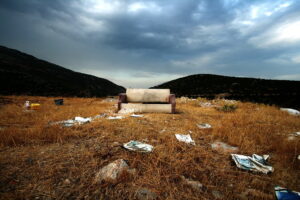Fashion industry’s stark environmental impact stitched up in new report
A study of resources used in textile production reiterates the woeful record on sustainability, while heralding an emerging trend of rejecting fast fashion practices.
Coinciding with the end of London Fashion Week, which finished this past weekend, waste and recycling company Divert.co.uk has unveiled research suggesting a growing appreciation of the environmental damage caused by the fashion sector, and the urgent need for change.
In a bid to highlight just how poor the industry’s record on sustainability is, the firm highlighted a number of shocking statistics, before asking the public questions relating to altered buying habits and, in particular, a movement towards second-hand purchases. It also made it clear that while not all clothing can be resold due to wear and damage, those looking to dispose of items should do so by visiting their local recycling centre.
*Producing a single t-shirt can use 2,700ltrs of water
*The textile industry as a whole uses 96bn cubic metres of water each year, enough for 37m Olympic swimming pools
*Just 12% of clothing materials are recycled annually
*In the UK, each person throws away an average of 3.1kg of textiles every 12 months
*Fashion produces more CO2 each minute than a car would driving around the world six times
‘360,000 tonnes of decent clothing a year ends up in the dump here in the UK, mostly because fashion trends move so quickly, and once people are done with something they chuck it,’ said Mark Hall, a spokesperson for Divert.co.uk. ‘Fast fashion means tonnes of lower quality goods going straight from wardrobe to the rubbish tip… ‘It’s the most tremendous waste of time, money and resources.’
When asked if they would consider buying ‘pre-loved’, or second-hand clothing, the vast majority of respondents said they would, or could be persuaded to do so:
Yes – 62%
No – 11%
Persuadable – 27%
It’s no surprise to see that people are willing to give older garments a second life. And there are plenty of reasons why now more than ever people are making the switch. People are trying to make eco-friendly decisions, so they’re turning to charity shops and second-hand sellers to cut down their own impact on the planet and reduce carbon footprints,’ Hall continued. ‘Instead of constantly creating more and more new things, we need to be making the most of what we already have, right down to the bare bones of it. The more we can do this, the less waste we will make, and the better the environment for us all.’
Recycling and reusing clothes contributes to the circular economy. Find out exactly what that means in our feature interview with Lorna Slater, Scotland’s Green Skills, Circular Economy and Biodiversity Minister. Then learn how data is helping the fashion industry slash emissions and reduce waste.
Image: Harper Sunday

















